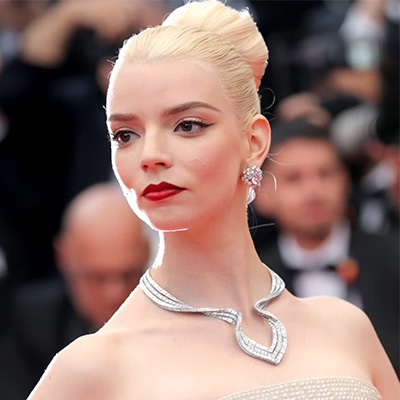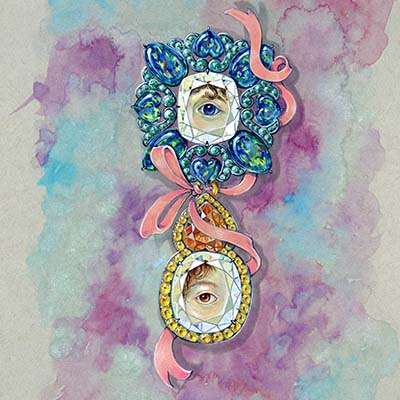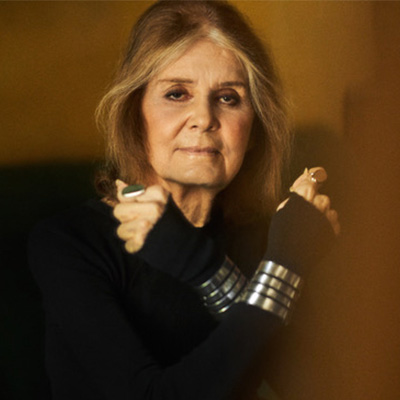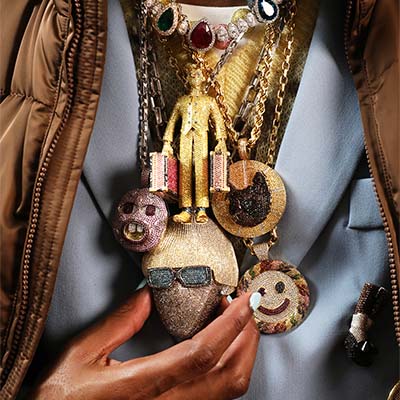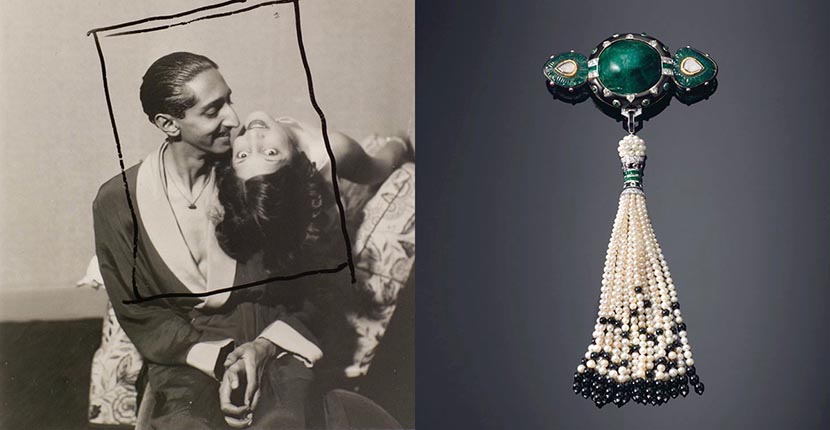
The Maharani Sanyogita poses with Yeshwant Rao Holkar II, the Maharaja of Indore, who is wearing a sapphire Taveez bead necklace by Cartier and a Cartier Art Deco brooch. Photo via Instagram @AlThaniCollection and Christie’s
Jewelry History
How India Inspired Cartier
To make some of the most imaginative designs in the firm’s storied history
Cartier’s love affair with India began to heat up around 1911. It’s a well-documented moment in western jewelry history. Jacques Cartier traveled with an elaborate caravansary from London to attend the Delhi Durbar marking the accession of King George V of England as Emperor of India. Along with other activities that surely included bejeweling British nobility for events and meeting potential new clients, Mr. Cartier did some gem shopping. One image of the jeweler seated on the floor along with Indian dealers and an assortment of stones captured the moment. It is not known exactly what Mr. Cartier bought on that well-documented excursion. Clearly, he was in awe of the splendor and shared details of the journey with his brothers Louis and Jacques.
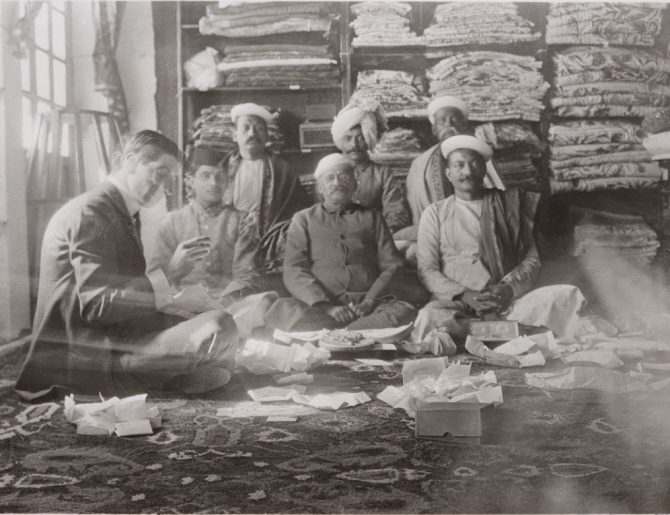
Jacques Cartier surrounding stones in gem papers while he conducts business with Indian dealers in 1911. Photo Cartier Archives © Cartier
In 1925 when French jewelers did an about face and shifted away from the bows, ribbons and floral motifs of courts of England and France into the Art Deco movement at the 1925 Paris Exposition des Art Décoratifs et Industriels Moderne, Cartier made the spirit of the Maharajah’s jewelry and India very much a part of its new look. Suddenly the collection that had been all about diamonds, pearls and platinum was infused with colorful cabochons and carved gems. There was lots of movement in the jewels. Some of Cartier’s motifs echoed shapes in traditional Mughal treasures.
While this story is generally known to the jewelry loving world in the west, there is no doubt that The Al Thani Collection assembled and displayed at so many world class museums in the world over the course of the last several years achieved one of its initial goals: to deepen the understanding of Indian design and how it inspired so many. In the past, Cartier’s passion for India had mainly been written from the French jeweler’s perspective in history books. The Al Thani Collection revealed so much more about the extraordinary and imaginative taste of the Maharajahs during Café Society days in Paris. They inspired Cartier, and indeed many other French jewelers, to new heights of creativity.
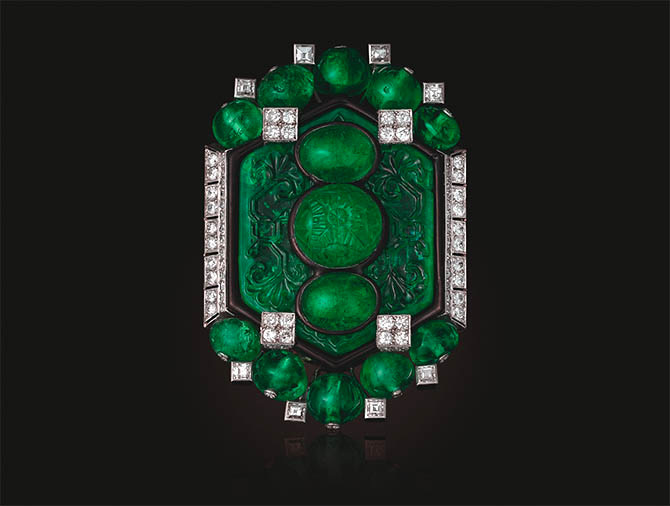
An Art Deco emerald, diamond and enamel brooch by Cartier being sold at Christie’s in New York. Estimate $1,000,000 – $1,500,000 Photo Christie’s
Now, that The Al Thani Collection is moving on to its next phase, 21 pieces of Cartier jewelry are going on the auction block at Christie’s in New York on June 19 in the Maharajas & Mughal Magnificence auction. (Most jewelers only have one piece in the sale. Bhagat has three. And to be clear, there are still Cartier jewels remaining in the Al Thani Collection.)
Some of the Cartier jewels being sold at Christie’s are contemporary items made in 2012 that were callbacks to the Indian Art Deco designs. Other jewels are examples of Cartier’s workshop doing maintenance for a collector such as transforming a turban ornament into a brooch. There are a handful of items among the 21 Cartier jewels that capture the magic of the Art Deco period and how elements of the Indian aesthetic shone in designs from the French jeweler. See highlights and find out about them below.
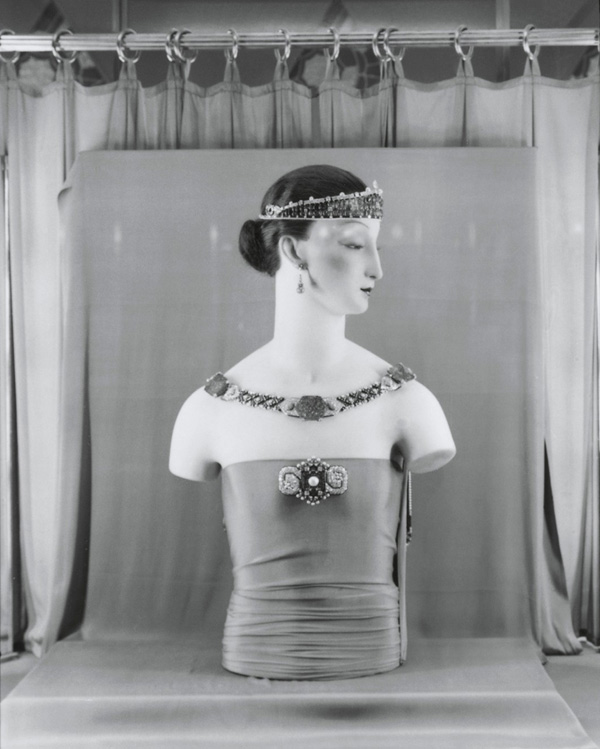
Cartier’s Collier Berenice set with the Taj Mahal emerald on display at the 1925 Paris Exposition on a mannequin wearing several other pieces by the French jeweler. Photo via Pinterest
The 141.13-carat carved hexagonal Taj Mahal emerald in the Maharajah & Mughal Magnificence auction was the centerpiece of the Collier Bérénice Cartier showed at the 1925 Paris Exposition. A groundbreaking design, the jewel was a long strap with no clasp that was intended to be slung over the shoulders. It captured the imagination of the press and was featured in several fashion magazines including Gazette du Bon Ton.
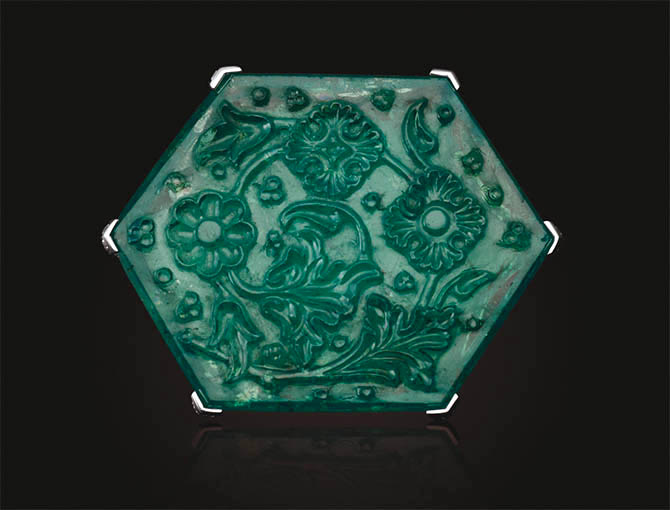
‘The Taj Mahal Emerald’ 141.13-carat Carved Emerald in a diamond brooch by Cartier being sold at Chrstie’s in New York. Estimate $1,500,000 – $2,500,000 Photo Christie’s
The gem is all that remains publicly known about the Art Deco jewel. The name for the emerald came years after the initial exhibit. It was inspired by the carved floral engravings that were reminiscent of the colored stone inlay of the Taj Mahal.

Art Deco belt buckle brooch by Cartier set with a 38.71-carat emerald, diamonds and sapphires. Estimate $500,000 – $700,000 Photo Christie’s
The emerald and diamond brooch by Cartier (seen above) was another piece in the jeweler’s outstanding display at the 1925 Paris Exposition. It features Indian turret shaped elements on both sides. The bold color combination is rendered in a 38.71-carat octagonal step-cut emerald and buff-top calibré-cut sapphires and emeralds. The brooch was designed to be worn as a belt buckle or an accent at the waist of an evening gown.
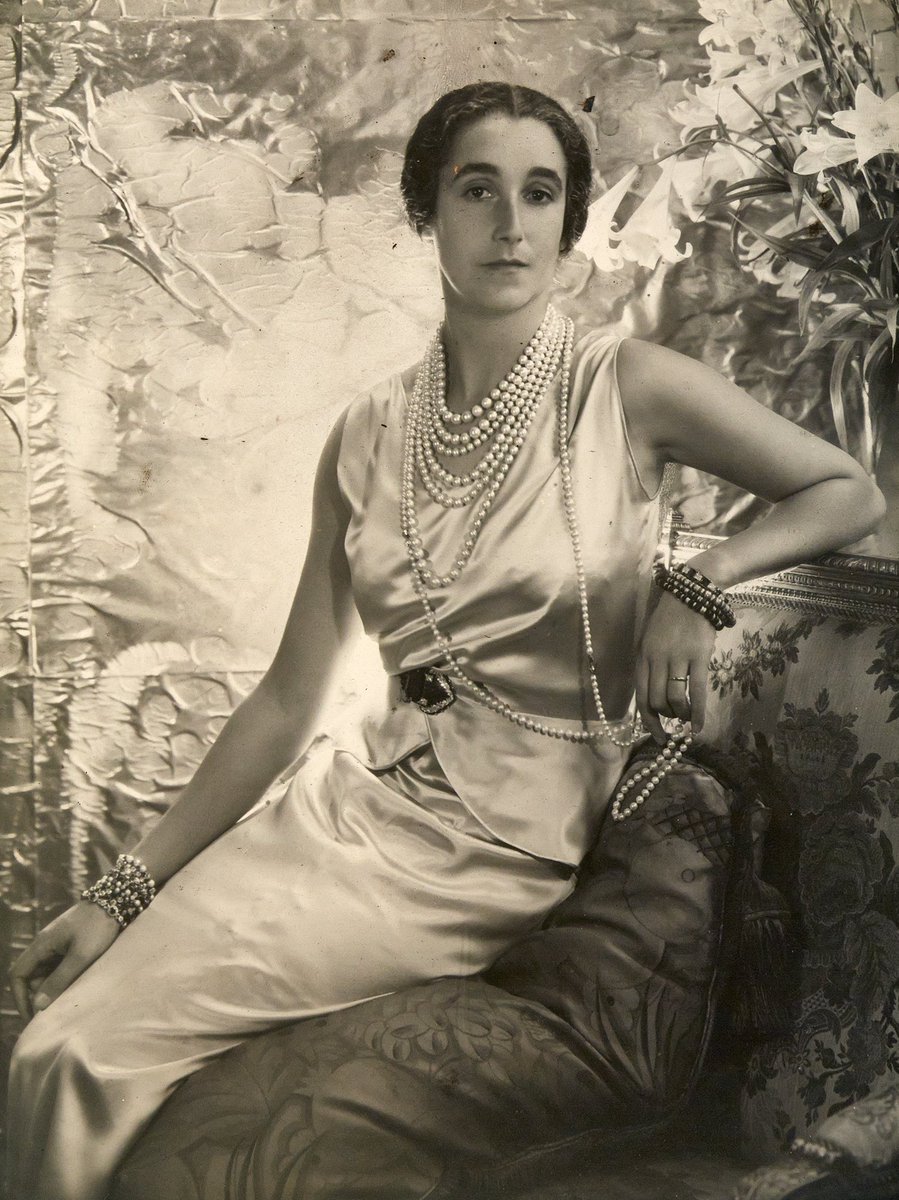
Sybil Sassoon, Marchioness of Cholmondeley wearing the Cartier Art Deco brooch at her waist with other important jewels. Photo via @HoughtonHallNorfolk
The Cartier emerald and diamond brooch was acquired by Sybil Sassoon, Marchioness of Cholmondeley who was photographed wearing the jewel several times along with other important pieces from her collection. The daughter of Sir Edward Sassoon and Baroness Aline de Rothschild freely blended the brooch with items from different eras in her jewelry box including a sapphire and diamond tiara and necklace from the French Crown Jewels. She wore the Art Deco brooch and 19th century designs to both the coronation of King George VI in 1937 and the coronation of Queen Elizabeth II in 1953.
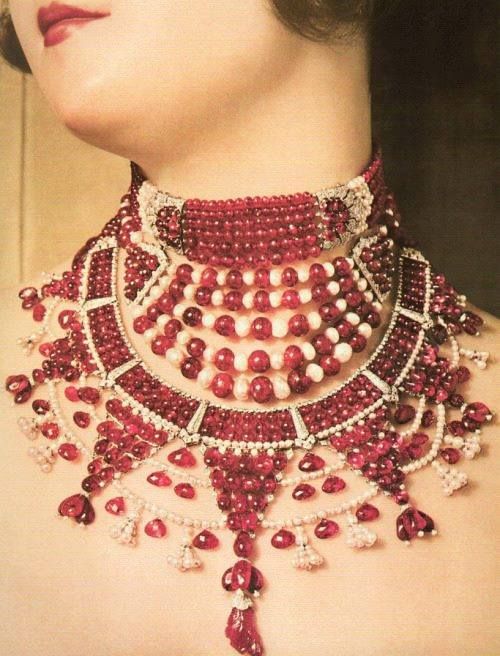
The complete Patiala Ruby Necklace by Cartier on a model around 1931. Photo via
Bhupinder Singh, Maharaja of Patiala was a legendary Cartier client during the 1920s and 30s. He supplied Cartier with gems to transform into many exceptional jewels but none are quite as celebrated as the Patiala Ruby Necklace. The piece is actually several necklaces composed of rubies, diamonds and natural pearls that could be worn layered together.

Maharani of Patiala wearing Cartier necklaces and other Art Deco jewels in 1931. Photo © National Portrait Gallery, London
The Maharaja of Patiala gave the jewel to one of his wives who wore it in a photograph in 1931. At some point, the necklace was sold and parts were disassembled. The choker in the Christie’s sale appeared at auction in Geneva around 2000 as a bracelet. It was identified by the Cartier Tradition department that deals in vintage pieces. They acquired and restored the jewel to its original design of a choker.
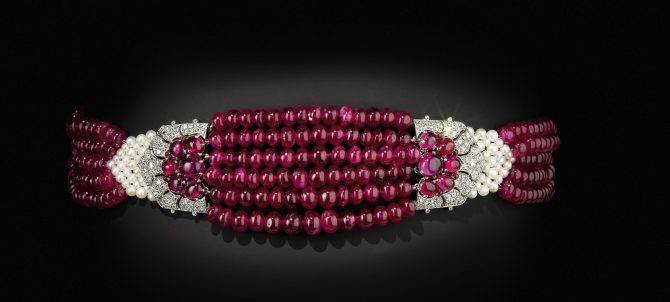
The Patiala Choker Necklace is set with rubies, natural pearls and diamonds. Photo Christie’s
The Patiala Choker is composed of ruby beads, oval, cabochon and circular cut rubies, natural pearls and diamonds set in platinum. Like several Indian luxury clients who shopped in Paris, the Maharaja of Patiala chose platinum because it was considered the chicest metal for High Jewelry in the west. In India gold has long been the traditional choice for fine jewelry.
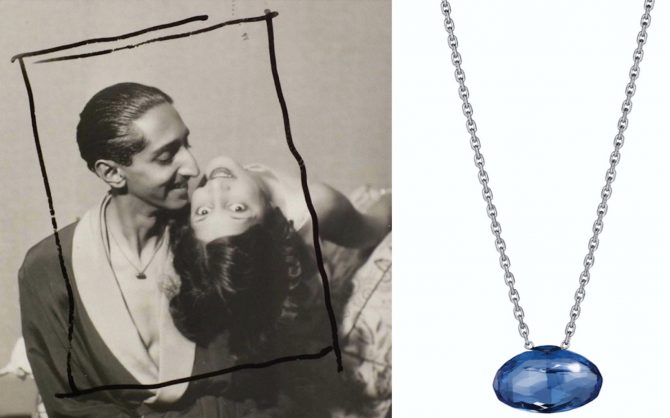
The Maharani Sanyogita poses with Yeshwant Rao Holkar II, the Maharaja of Indore, who is wearing a sapphire Taveez bead necklace by Cartier. Estimate $40,000 – $60,000 Photo by Man Ray via Instagram @al.thani.collection and Christie’s
Among all the Maharajas who shopped in Paris and became part of Café Society, none were quite as well known as the Yeshwant Rao Holkar II, the Maharaja of Indore and his wife Maharani Sanyogita. The glamorous young couple had their portraits painted by Bernard Boutet de Monvel wearing treasures. They were photographed out on the town in black tie and couture and posed for Man Ray in Cannes and Paris. The celebrated lensman wrote after one of the sittings in his biography:
‘The Maharaja of Indore came to the studio to be photographed, also in Western clothes – sack suits and formal evening dress. He was young, tall and very elegant. I got a substantial order from this sitting.… Next year, the Maharaja was in the South of France with his young bride. He had taken an entire floor of a hotel in Cannes for himself and his retinue. I arrived in Cannes before noon, was assigned to my room in the suite…The Maharanee was an exquisite girl in her teens. She wore French clothes, and a huge emerald ring. The Maharaja had bought it for her that morning while taking a walk.…’
In one of the Man Ray images, the Maharaja wears one of the simplest yet stunning pieces from Cartier being sold at Christie’s, the Indore Sapphire. The 18th century oval-shaped 23.20-carat sapphire taveez bead is suspended from a fine white gold link chain. The Indian style gem shape can be found in other Cartier masterpiece made during the late 20s and 30s. They accent the famous Daisy Fellowes fruit salad necklace, sometimes referred to as the Hindu necklace, that was fully inspired by Indian style and originally had a cord at the back half of the jewel in the Mughal mode.
Related Stories:
Who Is Sheikh Hamad Al Thani? And Why Is He Selling His Jewelry?
Indian Jewels Ignite The Dreams Of An Author
Alluring Emeralds In The Al Thani Collection
Get a gem in your mailbox SIGN UP FOR THE ADVENTURINE NEWSLETTER

